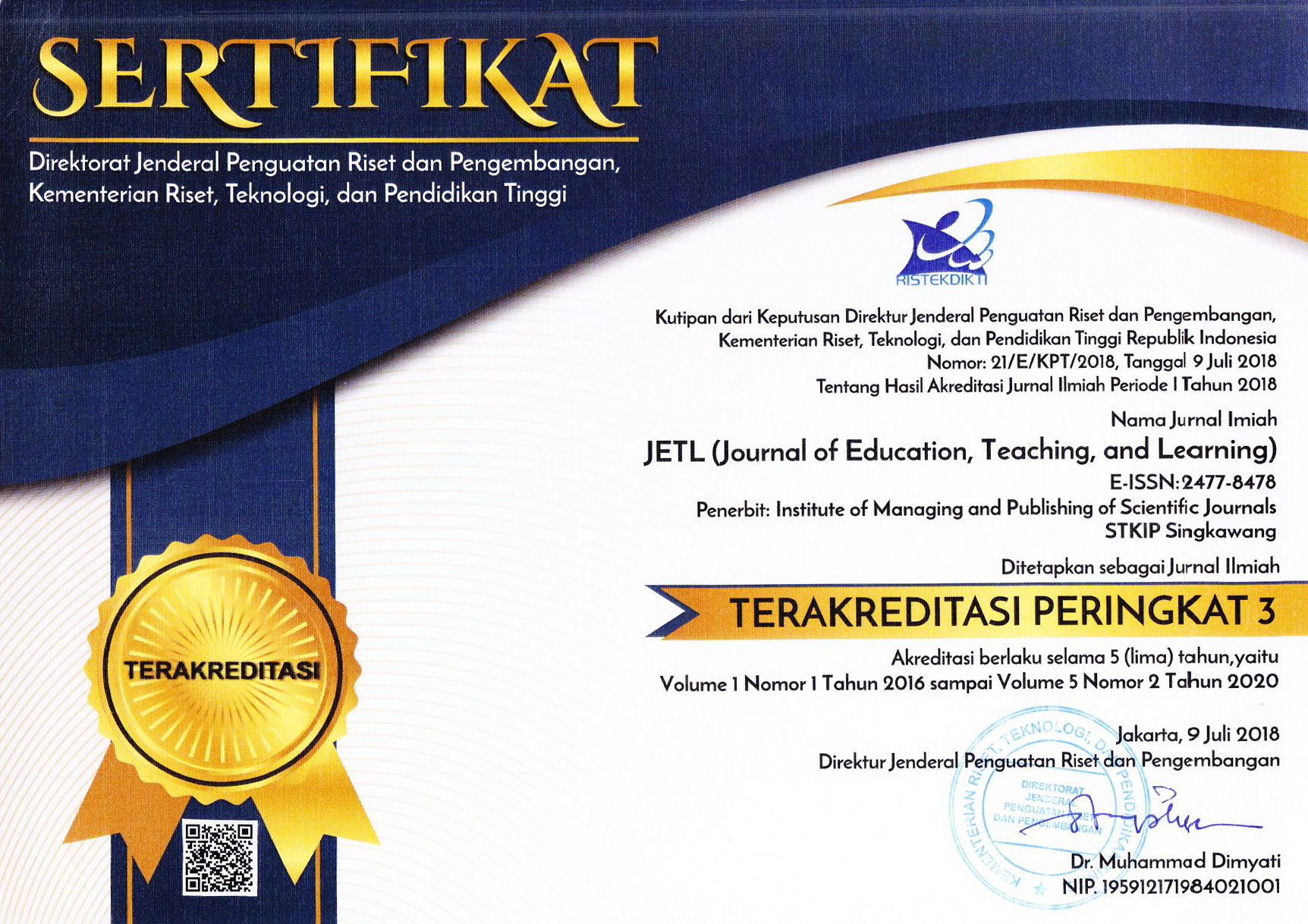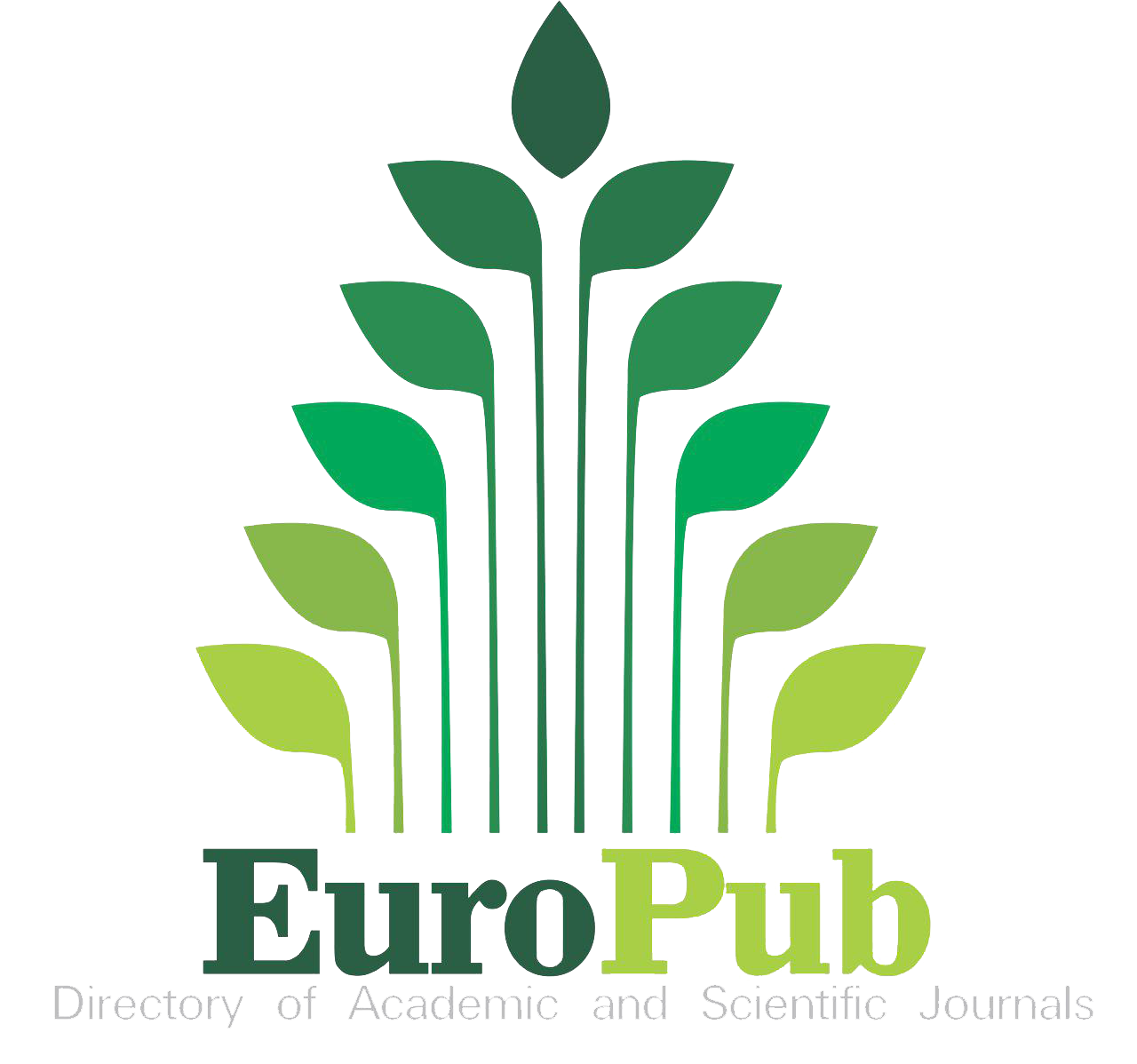Mathematics Learning Difficulties in Distance Learning
Abstract
Keywords
Full Text:
PDFReferences
Afriansyah, E. A. (2014). What Students’ Thinking about Contextual Problems is. International Seminar on Innovation in Mathematics and Mathematics Education, Departement of Mathematics Education Faculty of Mathematics and Natural Science Yogyakarta State University, Innovation and Technology for Mathematic, 279–288.
Alyaa, A. maharani, Krisdianto hadiprasetyo, & Annisa Prima Exacta. (2020). Analisis Kesulitan Belajar Pada Mata Pelajaran Matematika Dengan Pembelajaran Dalam Jaringan (Daring) Selama Masa Darurat COVID-19 Pada Siswa Kelas Viii Smp Negeri 2 Ngadirojo Tahun Ajaran 2019/2020. Jurnal Pendidikan, Sains Sosial, Dan Agama, 6(2), 6–12. https://doi.org/10.53565/pssa.v6i2.182
Arifin, Z. (2012). Evaluasi Pembelajaran. Rosdakarya.
Bonar, N., Repo, F. M., & Calesti, N. (2021). Kesulitan Belajar Matematika Siswa Pada Masa Pandemi dengan Metode Pembelajaran Jarak Jauh (PJJ). JUWARA: Jurnal Wawasan Dan Aksara, 1(2), 172–185.
Darimi, I. (2016). Diagnosis Kesulitan Belajar Siswa Dalam Pembelajaran Aktif Di Sekolah. JURNAL EDUKASI: Jurnal Bimbingan Konseling, 2(1), 30. https://doi.org/10.22373/je.v2i1.689
Fernandes, L., Winardi, Y., & Appulembang, O. D. (2019). Hambatan Belajar Matematika: Studi Kasus Di Kelas Viii Suatu Sekolah Di Semarang [Barriers To Learning Mathematics: a Case Study of Grade 8 Students At a School in Semarang]. JOHME: Journal of Holistic Mathematics Education, 3(1), 16. https://doi.org/10.19166/johme.v3i1.2071
Hayat, S. (2021). Kesulitan belajar daring siswa kelas X Mipa pada mata pelajaran Sejarah Kebudayaan Islam di MAN Kota Surabaya. http://digilib.uinsby.ac.id/46647/%0Ahttp://digilib.uinsby.ac.id/46647/2/Sihhatul Hayat_D91217070.pdf
Hendrawan, D. N., & Hendriana, B. (2021). Pola Asuh Orang Tua Siswa dengan Motivasi Belajar Matematika Tingkat Tinggi pada Masa Pandemi COVID-19. Mosharafa: Jurnal Pendidikan Matematika, 10(3), 369–378. https://doi.org/10.31980/mosharafa.v10i3.1020
Kusrini. (2014). Strategi Pembelajaran Matematika. Universitas Terbuka. http://repository.ut.ac.id/4725/1/PEMA4301-TM.pdf
Kusumaningpuri, A. R., Murtiyasa, B., Fuadi, D., & Hidayati, Y. M. (2022). Analisis Kesulitan Matematika Pokok Bahasan Statistika pada Siswa Sekolah Dasar. Jurnal Basicedu, 6(1), 933–942. https://doi.org/10.31004/basicedu.v6i1.2058
Lily, S. (2021). Analisis Tingkat Kesulitan Belajar Matematika Secara Daring Terhadap Hasil Belajar Peserta Didik. CENDEKIA: Jurnal Ilmu Pengetahuan, 1(3), 187–192. https://doi.org/10.51878/cendekia.v1i3.469
Masfufah, R., & Afriansyah, E. A. (2021). Analisis Kemampuan Literasi Matematis Siswa melalui Soal PISA. Mosharafa: Jurnal Pendidikan Matematika, 10(2), 291–300. https://doi.org/10.31980/mosharafa.v10i2.825
Mulyasa, H. E. (2014). Manajemen pendidikan karakter. Bumi Aksara.
Murtiyasa, B., & Amini, A. D. (2021). Analisis Motivasi Belajar Siswa Smp Dalam Pembelajaran Matematika Di Era COVID-19. AKSIOMA: Jurnal Program Studi Pendidikan Matematika, 10(3), 1554. https://doi.org/10.24127/ajpm.v10i3.3711
Murtiyasa, B., Aulida, A. N., & Affendi, M. A. (2021). PYTHAGORAS : Jurnal Pendidikan Matematika , 16 ( 2 ), 2021 , 141-150 Analisis efektivitas brainly sebagai platform e-learning untuk meningkatkan minat belajar siswa SMA. 16(20), 141–150.
Murzani. (2018). Analisis Kesulitan Belajar Siswa Pada Mata Pelajaran Matematika Di Kelas Iv Sdn 9 Masbagik Utara Tahun Pelajaran 2017/2018. Skripsi Program Studi Pendidikan Guru Sekolah Dasar: FKIP Universitas Mataram. https://doi.org/10.1016/j.gecco.2019.e00539%0Ahttps://doi.org/10.1016/j.foreco.2018.06.029%0Ahttp://www.cpsg.org/sites/cbsg.org/files/documents/Sunda Pangolin National Conservation Strategy and Action Plan %28LoRes%29.pdf%0Ahttps://doi.org/10.1016/j.forec
Prawiyogi, A. G., Purwanugraha, A., Fakhry, G., & Firmansyah, M. (2020). Efektifitas Pembelajaran Jarak Jauh Terhadap Pembelajaran Siswa di SDIT Cendekia Purwakarta. Jurnal Pendidikan Dasar, 11(01), 94–101.
Sari, L. K., & Madio, S. S. (2021). Kesulitan Belajar Matematika Siswa Melalui Pembelajaran Jarak Jauh. Plusminus: Jurnal Pendidikan Matematika, 1(3), 409–420.
Subini, N. (2012). Mengatasi Kesulitan Belajar pada Anak. Javalitera.
Sudjana. (2005). Metode Statistika. Tarsito.
Sugiyono. (2017). Metode Penelitian Kuantitatif, Kualitatif, dan R&D. Alfabeta, CV.
Sugiyono. (2018). Metode penelitian kuantitatif. Alfabeta.
Sumartini, T. S., Sundayana, R., Sukandar, S., Afriansyah, E. A., Puspitasasri, N., Nuraeni, R., Lurytawati, I. P., Matematika, J. P., & Indonesia, I. P. (2020). Pedagogical Content Knowledge. 3, 10–12.
Sutama. (2019). Metode Penelitian Pendidikan (Kuantitatif, Kualitatif, PTK, Mix Method, R&D). Jasmine.
Teli Latifah, E. A. A. (2021). KESULITAN DALAM KEMAMPUAN PEMECAHAN MASALAH MATEMATIS SISWA PADA MATERI STATISTIKA. Journal of Authentic Research on Mathematics Education (JARME), 3(2), 134–150. https://doi.org/https://doi.org/10.37058/jarme.v3i2.3207
DOI: http://dx.doi.org/10.26737/jetl.v8i1.3433
Refbacks
- There are currently no refbacks.

This work is licensed under a Creative Commons Attribution-NonCommercial 4.0 International License.
Published by:
Institute of Managing and Publishing of Scientific Journals STKIP Singkawang
Sekolah Tinggi Keguruan dan Ilmu Pendidikan (STKIP) Singkawang
Address : STKIP Singkawang, Jalan STKIP - Kelurahan Naram Singkawang, Kalimantan Barat, INDONESIA, 79251
No. Telp. : +62562 420 0344
No. Fax. : +62562 420 0584
JETL (Journal of Education, Teaching, and Learning)
e-ISSN : 2477-8478
p-ISSN : 2477-5924

Editor in Chief Contact: [email protected] / Wa: +6282142072788
Publisher Contact: [email protected] / Wa: +6282142072788
Management Tools
JETL Indexed by:
JETL (Journal of Education, Teaching, and Learning) is licensed under a Creative Commons Attribution-NonCommercial 4.0 International License.











